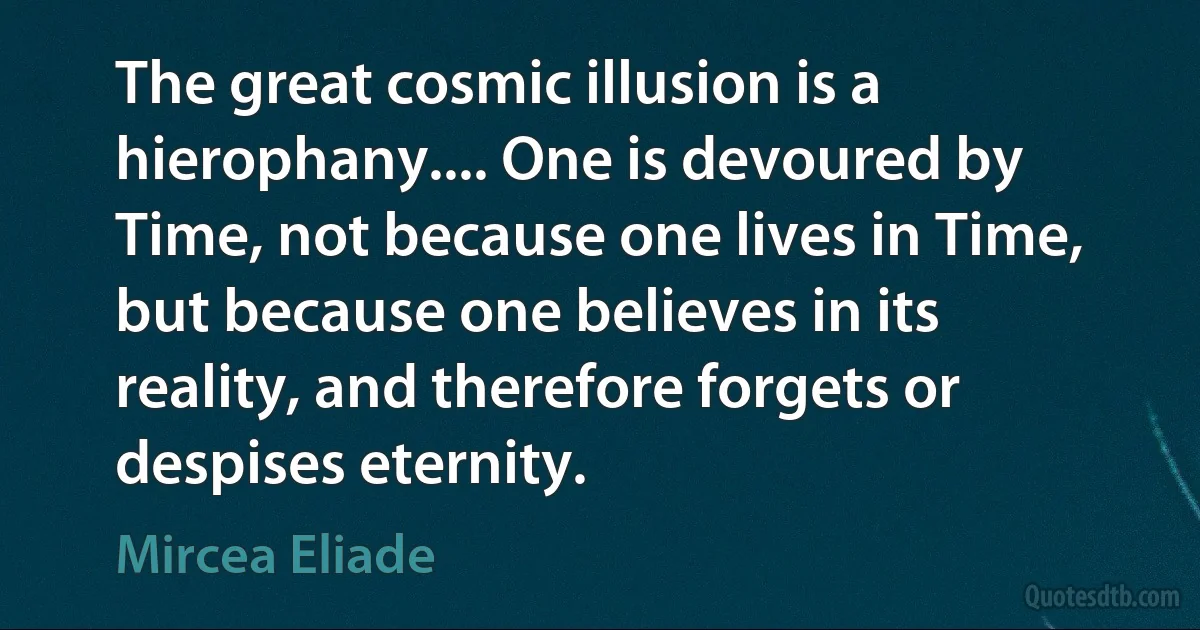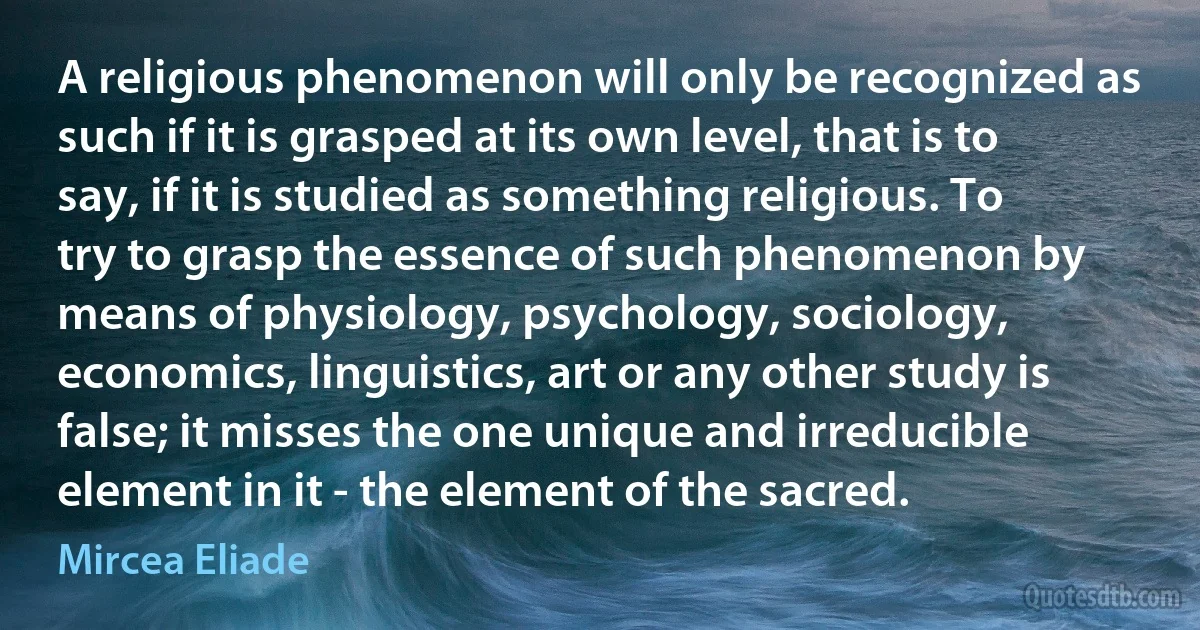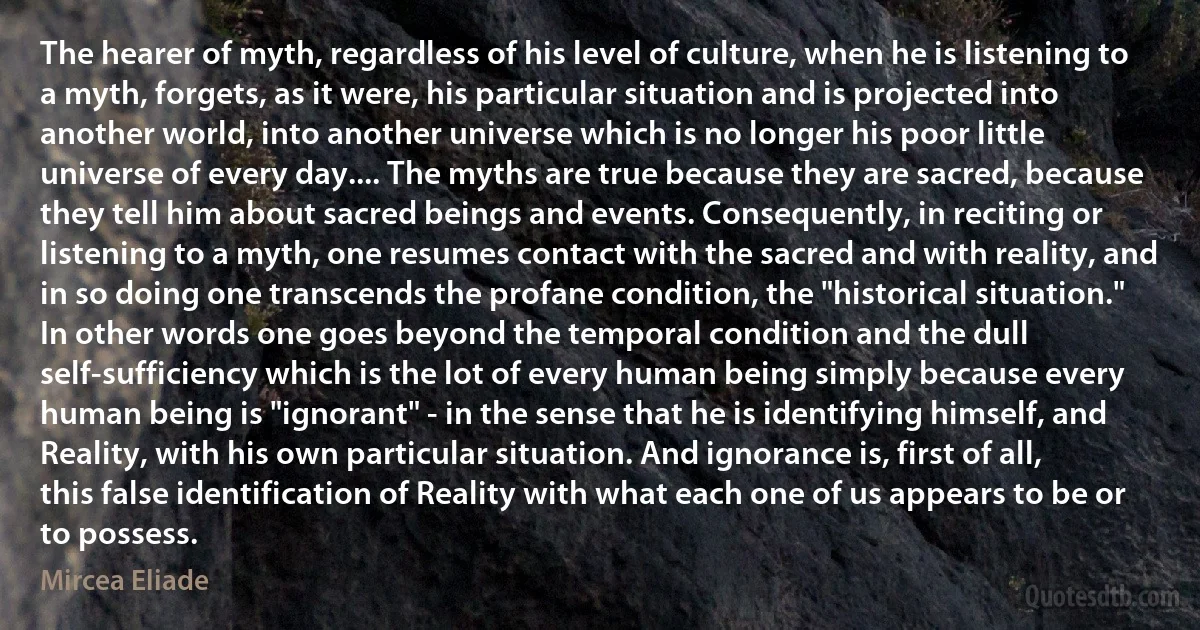Mircea Eliade quotes
These thirty years, and more, that I've spent among exotic, barbaric, indomitable gods and goddesses, nourished on myths, obsessed by symbols, nursed and bewitched by so many images which have come down to me from those submerged worlds, today seem to me to be the stages of a long initiation. Each one of these divine figures, each of these myths or symbols, is connected to a danger that was confronted and overcome. How many times I was almost lost, gone astray in this labyrinth where I risked being killed... These were not only bits of knowledge acquired slowly and leisurely in books, but so many encounters, confrontations, and temptations. I realize perfectly well now all the dangers I skirted during this long quest, and, in the first place, the risk of forgetting that I had a goal... that I wanted to reach a "center."

Mircea Eliade
It is only through the discovery of History - more precisely by the awakening of the historical consciousness in Judaeo-Christianity and its propagation by Hegel and his successors - it is only through the radical assimilation of the new mode of being represented by human existence in the world that myth could be left behind. But we hesitate to say that mythical thought has been abolished. As we shall soon see, it managed to survive, though radically changed (if not perfectly camouflaged). And the astonishing fact is that, more than anywhere else it survives in historiography!

Mircea Eliade
In archaic and traditional societies, the surrounding world is conceived as a microcosm. At the limits of this closed world begins the domain of the unknown, of the formless. On this side there is ordered - because of inhabited and organized - space; on the other, outside this familiar space, there is the unknown and dangerous region of the demons, the ghosts, and the dead and foreigners - in a world, chaos or death or night. This image of an inhabited microcosm, surrounded by desert regions as a chaos or a kingdom of the dead, has survived even in highly evolved civilizations such as those of China, Mesopotamia and Egypt.

Mircea Eliade
The worldly man lives in society, marries, establishes a family; Yoga prescribes absolute solitude and chastity. The worldly man is "possessed” by his own life; the yogin refuses to "let himself live”; to continual movement, he opposes his static posture, the immobility of āsana; to agitated, unrhythmical, changing respiration, he opposes prānāyāma, and even dreams of holding his breath indefinitely; to the chaotic flux of psychomental life, he replies by "fixing thought on a single point,” the first step to that final withdrawal from the phenomenal world which he will obtain through pratyāhāra. All of the yogic techniques invite to one and the same gesture-to do exactly the opposite of what human nature forces one to do. From solitude and chastity to samyama, there is no solution of continuity. The orientation always remains the same-to react against the "normal,” "secular,” and finally "human” inclination.

Mircea Eliade



